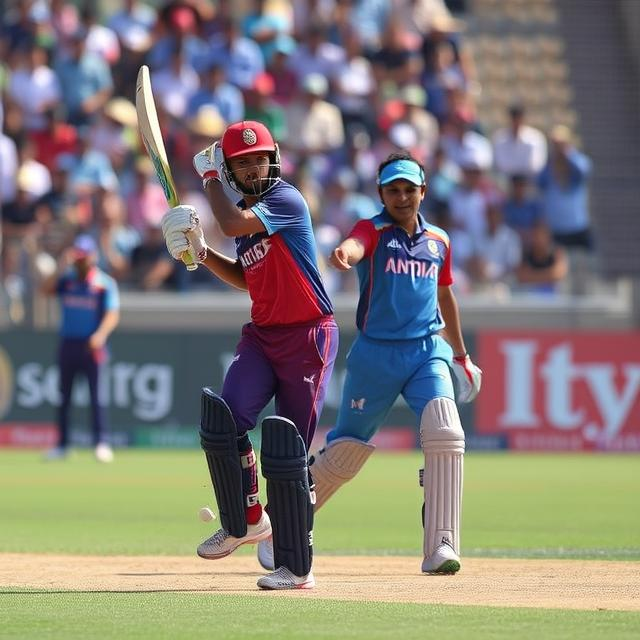DLS Method: A Crucial Factor in India vs. Pakistan Cricket Encounters

DLS Method: A Crucial Factor in India vs. Pakistan Cricket Encounters
The India vs. Pakistan cricketing rivalry is legendary, captivating audiences worldwide with its intensity and passion. Beyond the drama on the field, one element often plays a pivotal role in shaping the outcome: the Duckworth-Lewis-Stern (DLS) method. This article delves deep into the DLS method, exploring its significance in determining match outcomes, especially in the high-stakes encounters between India and Pakistan.
Unveiling the intricacies of the DLS method, we’ll examine how it adapts to changing conditions and its profound impact on the thrilling contests between these two cricketing giants. From rain-affected matches to close finishes, the DLS method often becomes the deciding factor, making the outcome often unpredictable, and therefore so engaging for the spectators.
Understanding the Duckworth-Lewis-Stern Method
The DLS method, an ingenious algorithm, is a crucial tool used in limited-overs cricket to adjust the target score when matches are interrupted by weather. Developed by Frank Duckworth and Tony Lewis, and further refined with contributions from Alan Stern, it calculates the revised target score based on the amount of overs lost due to interruptions. It factors in the remaining overs for both teams, as well as the progress each team has made in those overs to arrive at a fair target for the team chasing.
The algorithm is complex, taking into account various factors, including the current score, the remaining overs, the rate at which runs are being scored, and the relative strength of the batting side compared to the bowling side at the time the match is interrupted.
Crucially, the DLS method isn’t just about a numerical calculation; it reflects the dynamic nature of cricket and aims to determine a fair result for both teams. This is a cornerstone of the method’s widespread acceptance, as it attempts to mitigate the impact of external factors on the competitive outcome.
The DLS Method in India-Pakistan Matches
The India-Pakistan rivalry often involves close contests, and the DLS method has played a significant role in shaping the narratives of several of these matches. It’s no exaggeration to say that the method can dramatically reshape the dynamic of the encounter, making it both nail-biting and fascinating for the spectators.
The unpredictability it introduces is a key aspect of the dramatic intensity of the India-Pakistan matches, keeping audiences engaged and on the edge of their seats. When weather throws a spanner in the works, the DLS method becomes a decisive tool in determining the victor. This is where the real magic of cricket unfurls.
Examples of DLS Method in Action
Numerous India-Pakistan matches have seen the DLS method employed to settle the outcome. Let’s examine a few examples, highlighting the method’s effect on the match dynamic.
Example 1: Imagine a match interrupted by rain. India is batting first and accumulates a substantial score. When the rain stops, the DLS method may reduce the target for Pakistan to a score that reflects both teams’ progress during the overs played before the interruption.
Example 2: Suppose that a match is interrupted while Pakistan is batting, and the DLS method suggests a reduced target. The calculation of the revised target for the team chasing (Pakistan) takes into account not only the lost overs, but also the score achieved by India when batting first, and the rate at which they scored. This shows the sophistication of the DLS method in aiming for a fair outcome.
These examples underscore the method’s vital role in ensuring fair play and delivering a result reflective of the match’s essence. Such examples are a testament to the robustness of the DLS method.
Impact on Player Strategies
The DLS method also has a tangible influence on the strategies employed by both teams. Teams might adjust their approach to batting or bowling during matches to try to maximize their opportunities and gain an edge in the game. This is crucial to comprehend.
If a team anticipates a DLS method application, their batting strategy can change, potentially shifting from a cautious approach to an aggressive one, depending on the circumstances. The need to manage resources and ensure a potential for a positive outcome takes centre stage. Furthermore, the way players and coaches adjust to different scenarios of rain delays is a key part of this.
Conclusion: A Fairer and More Engaging Sport
The DLS method serves as a critical component in ensuring fairness and engagement in limited-overs cricket. In high-profile matches like those between India and Pakistan, where every game has a significance, the method plays an even more crucial role, and it is an important part of ensuring that the outcome is fair. This is the case particularly during rain-affected or close finishes. The DLS method’s intricacies reflect a commitment to ensuring the integrity and excitement of the sport remain in place.
The algorithm, while complex, attempts to offer a fair result, acknowledging the dynamic nature of cricket. Its application in high-stakes encounters like the India-Pakistan series adds an extra layer of intrigue and strategy, making these matches even more exciting for fans and players alike.
As the rivalry between India and Pakistan continues, the DLS method will likely play a crucial part in shaping future encounters. The complexities, the insights, and the unpredictability it introduces are a part of the sport’s charm and thrill, making it an enjoyable sport. It is vital to understanding the game fully, both for the players and the fans.
The constant evolution of the DLS method, in conjunction with the ever-intensifying rivalry between India and Pakistan, will continue to hold the cricketing world spellbound, presenting audiences with a dynamic and thrilling match experience.